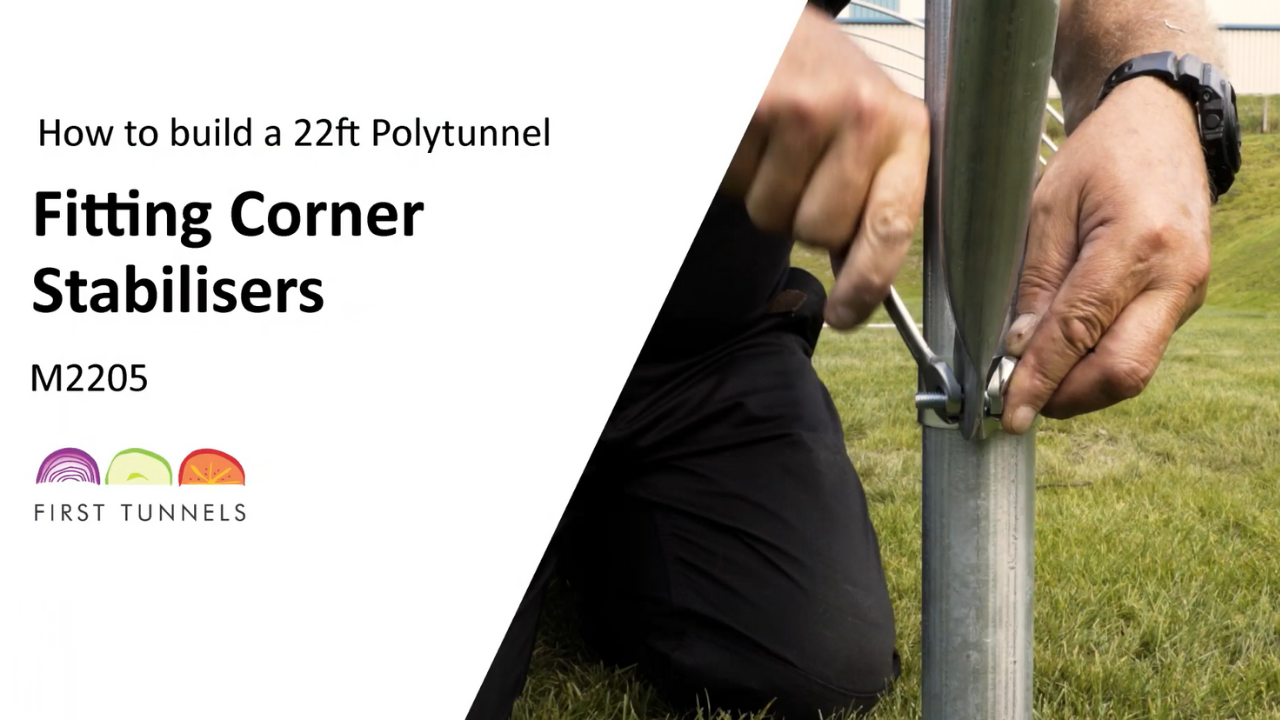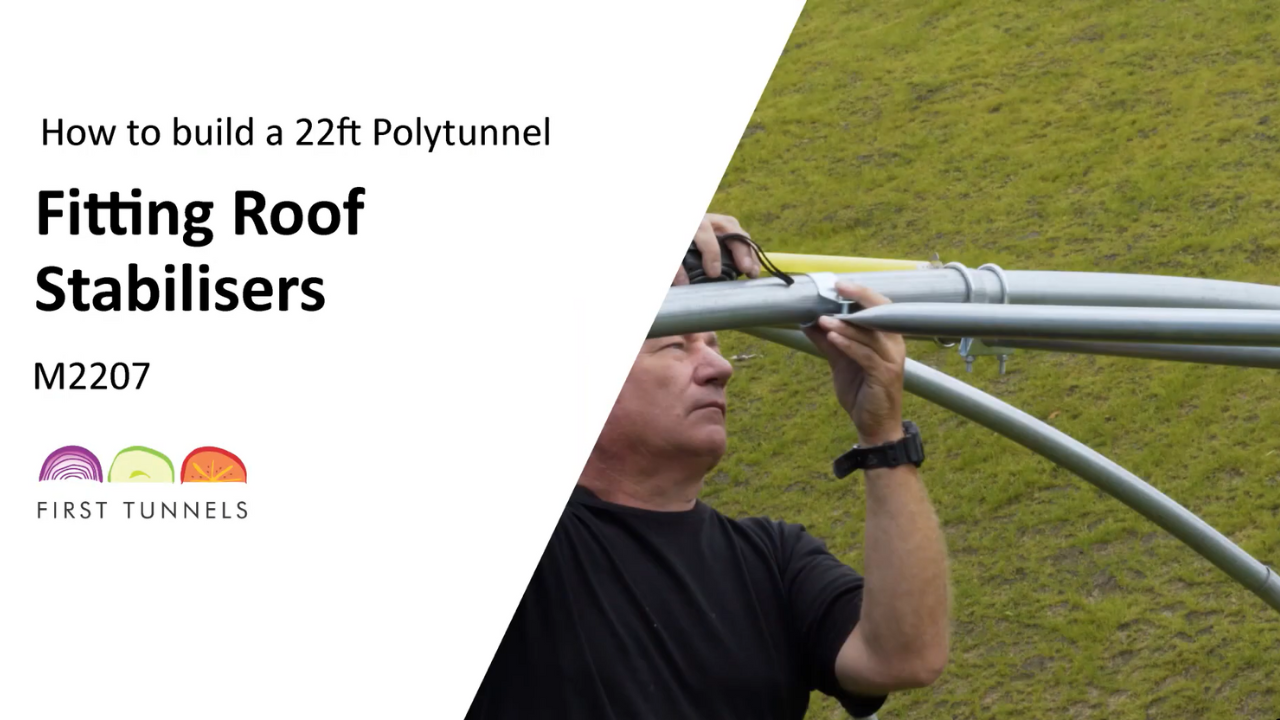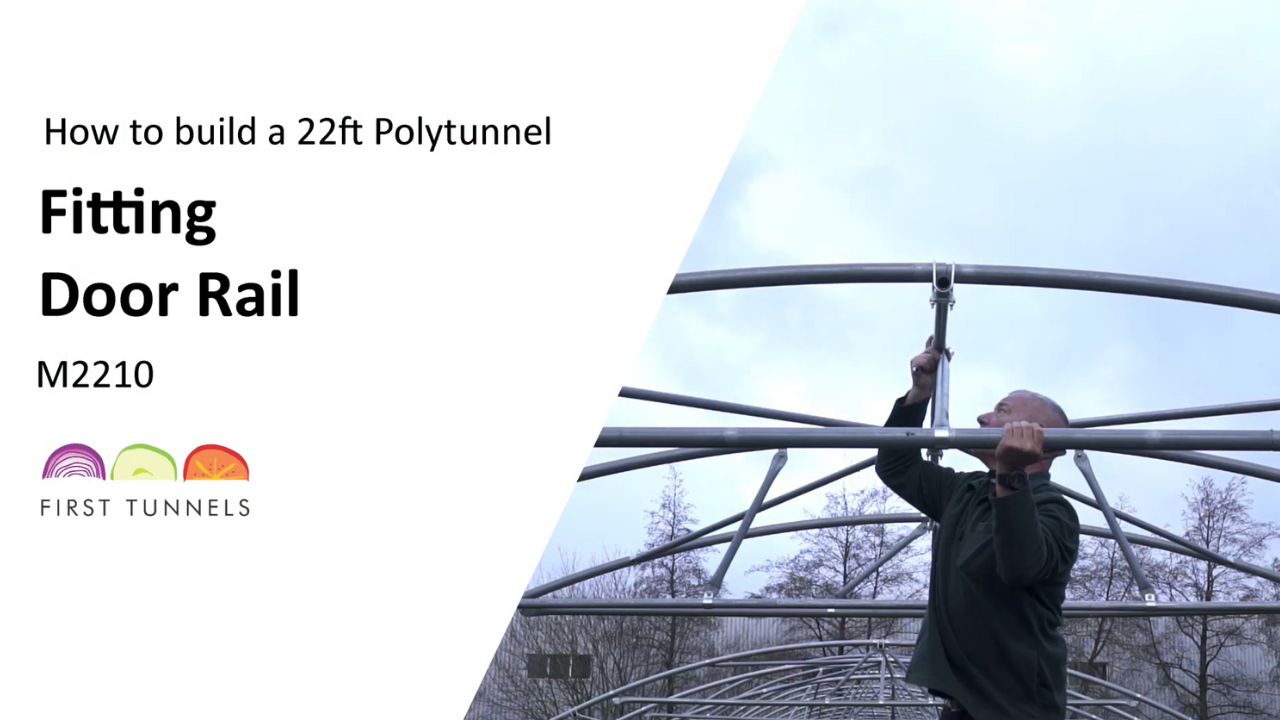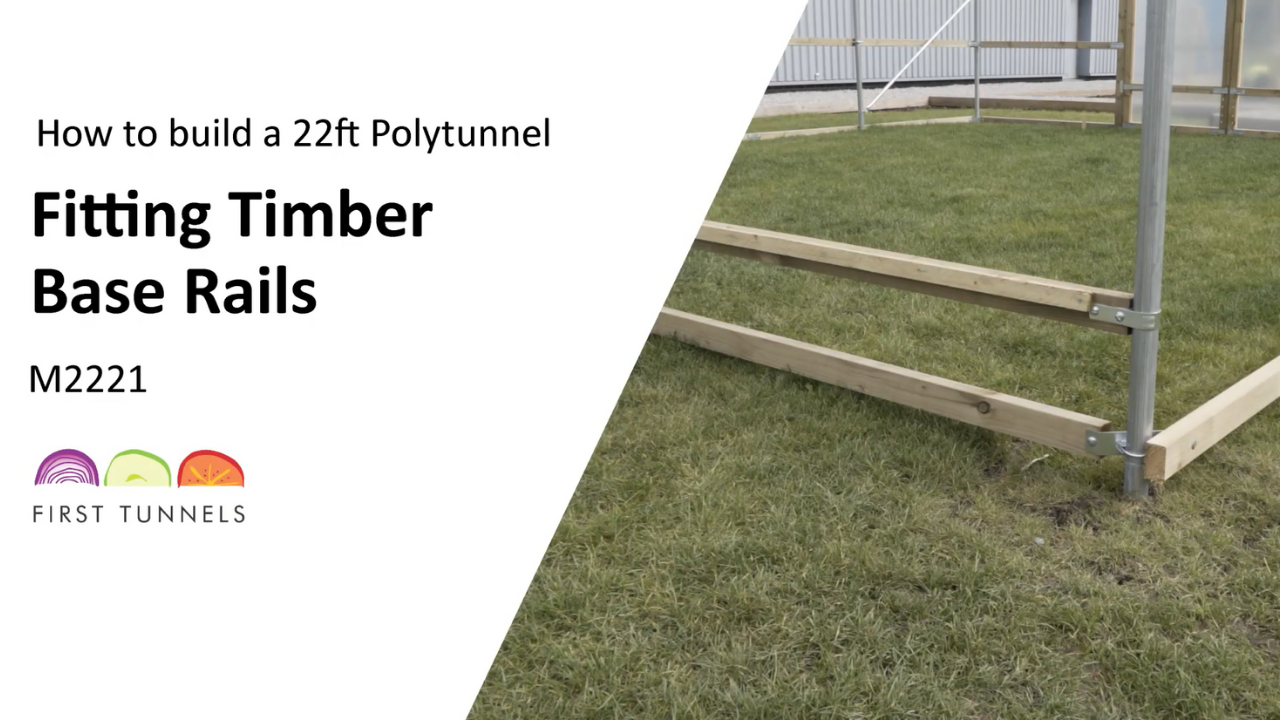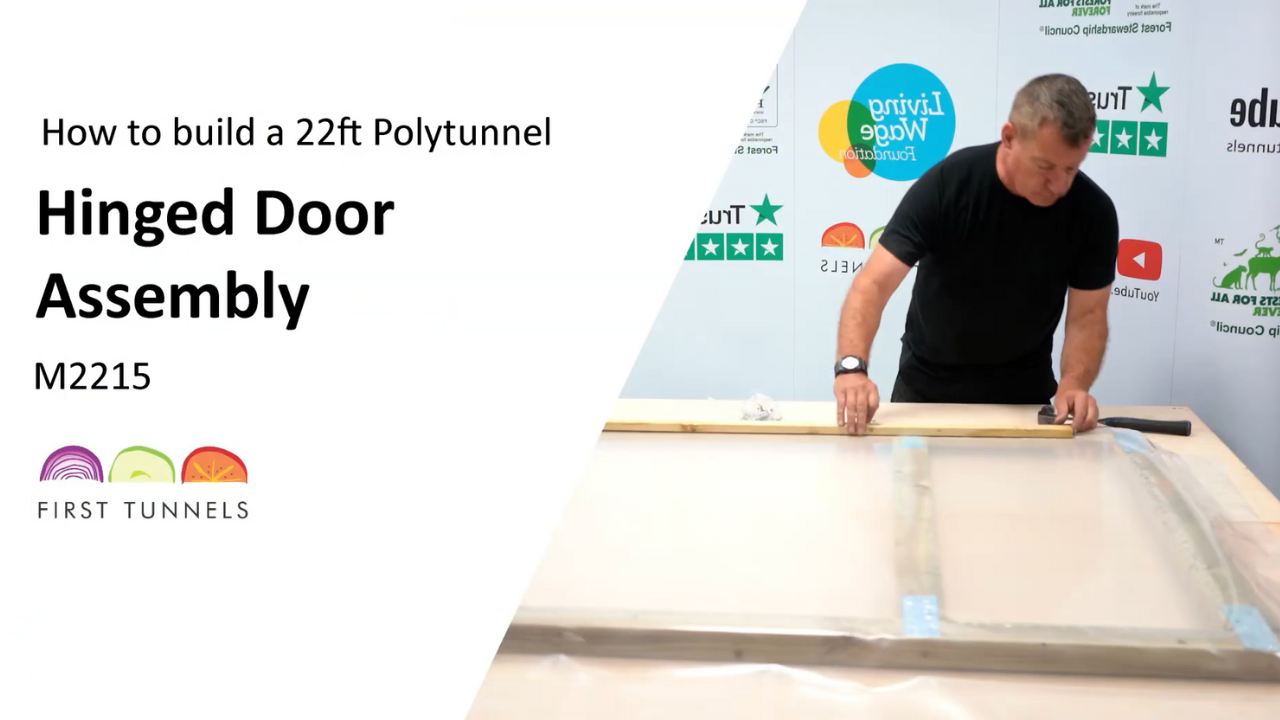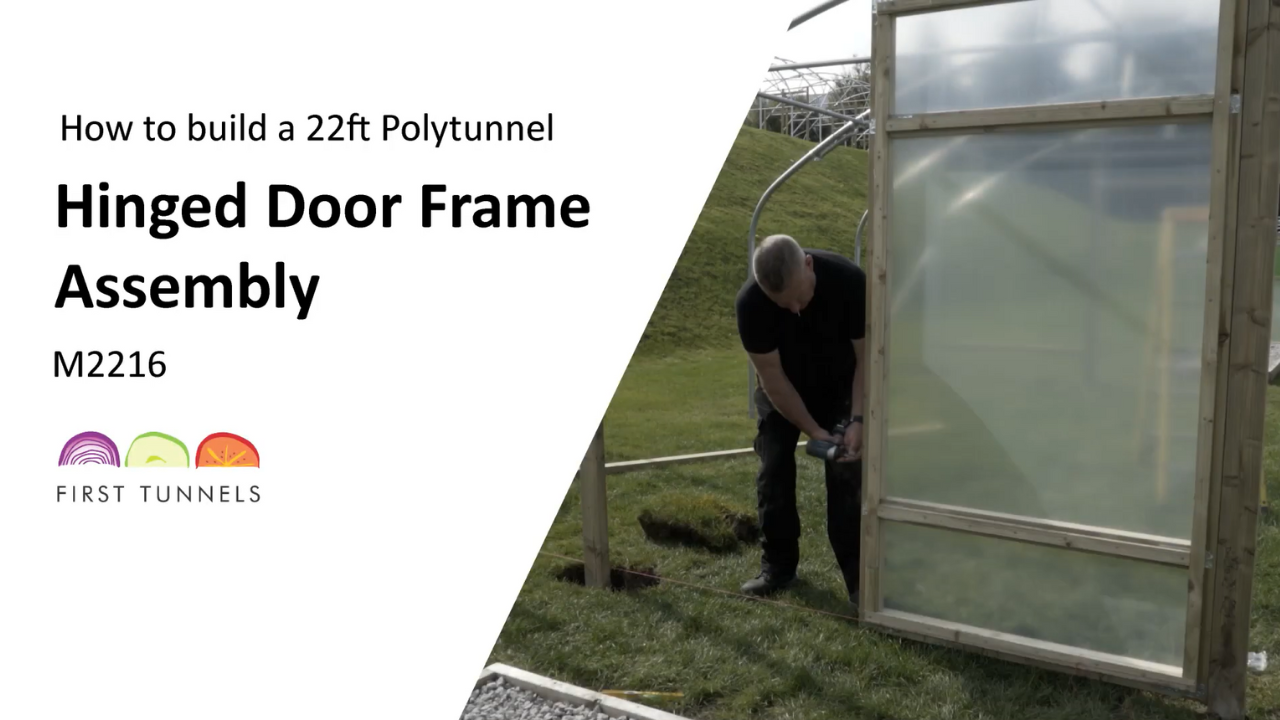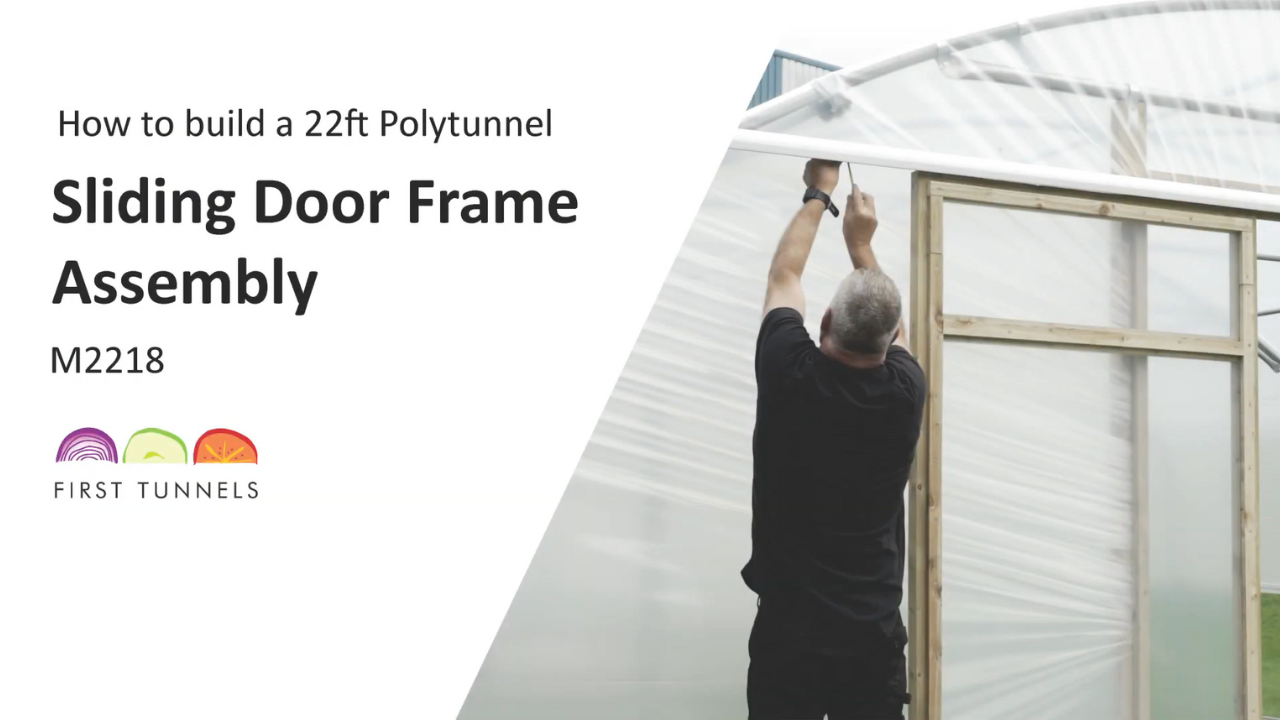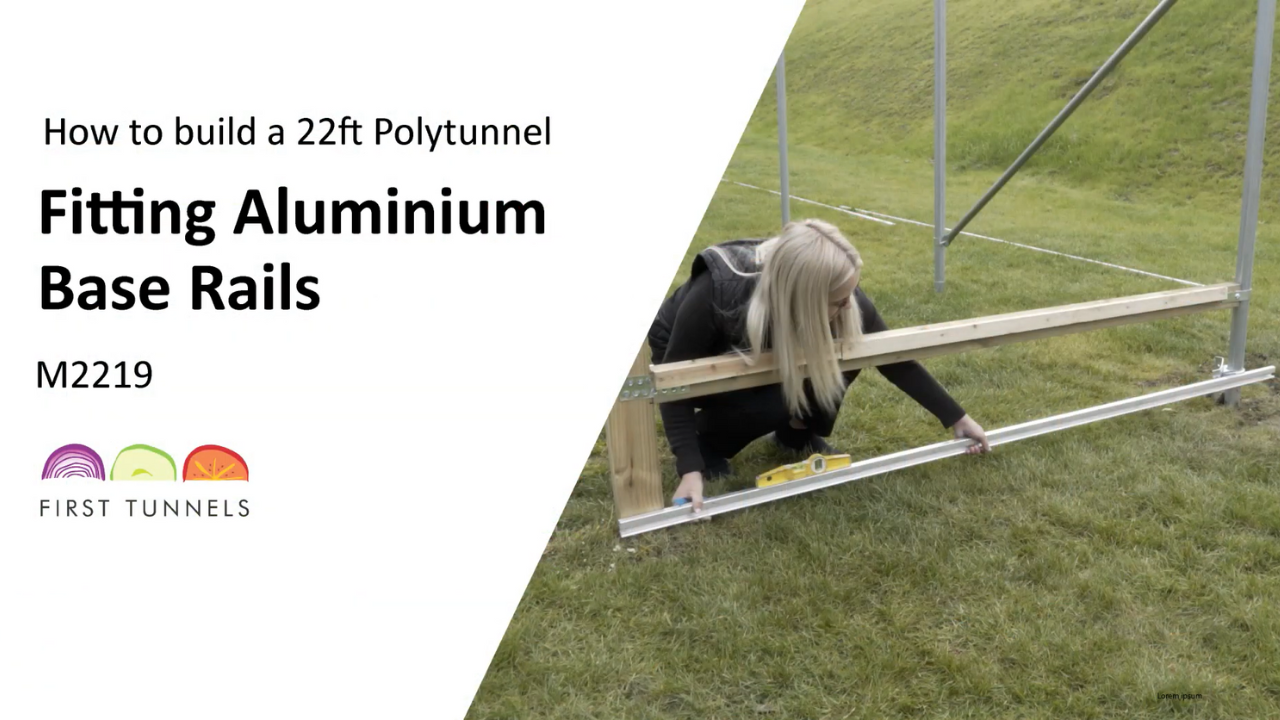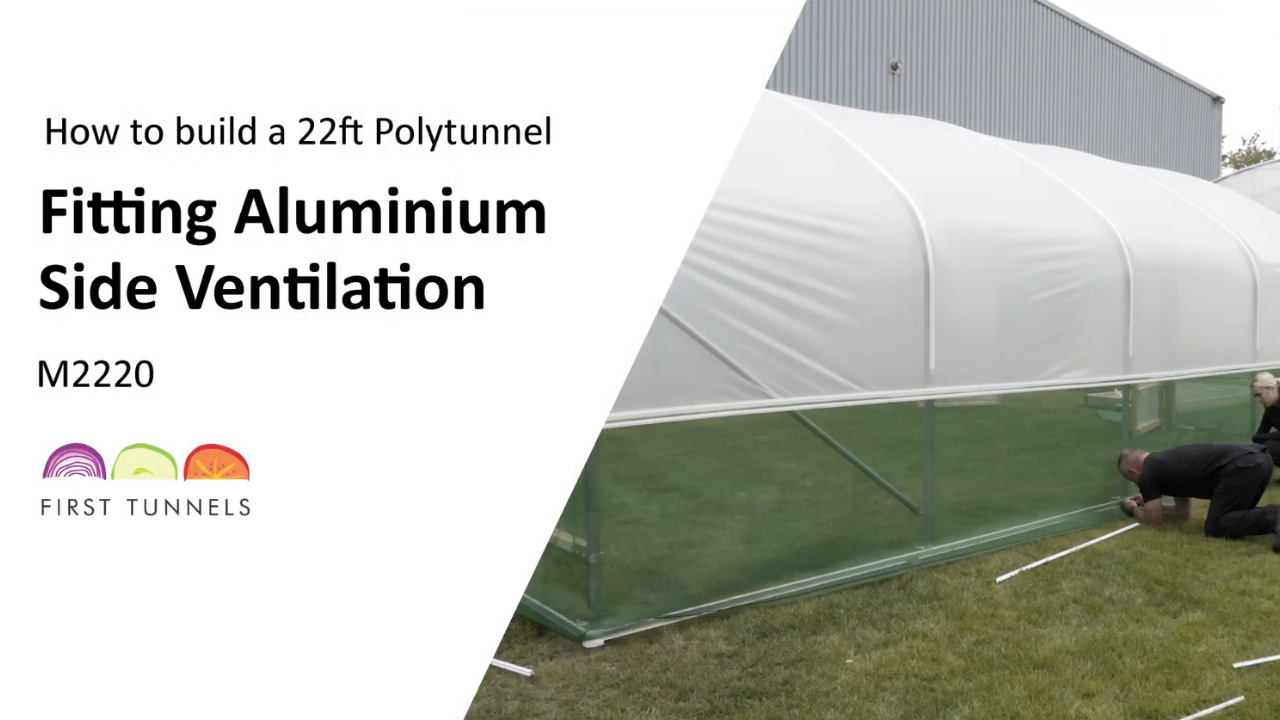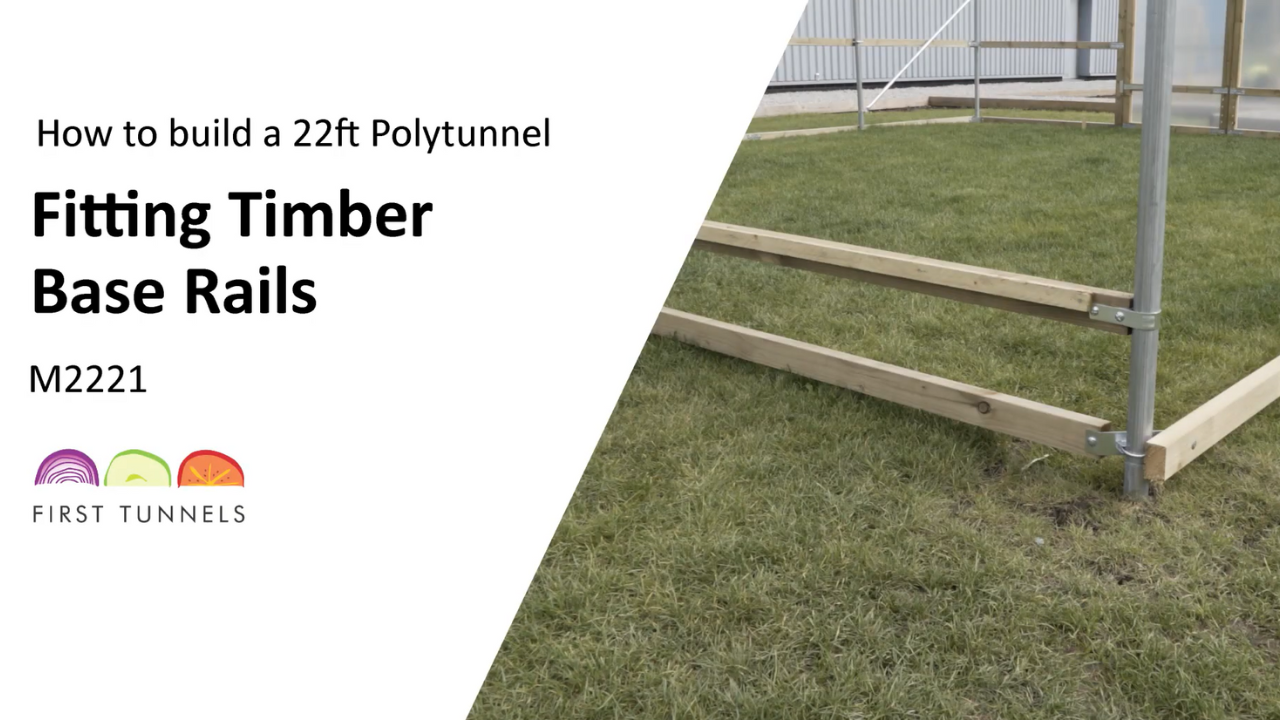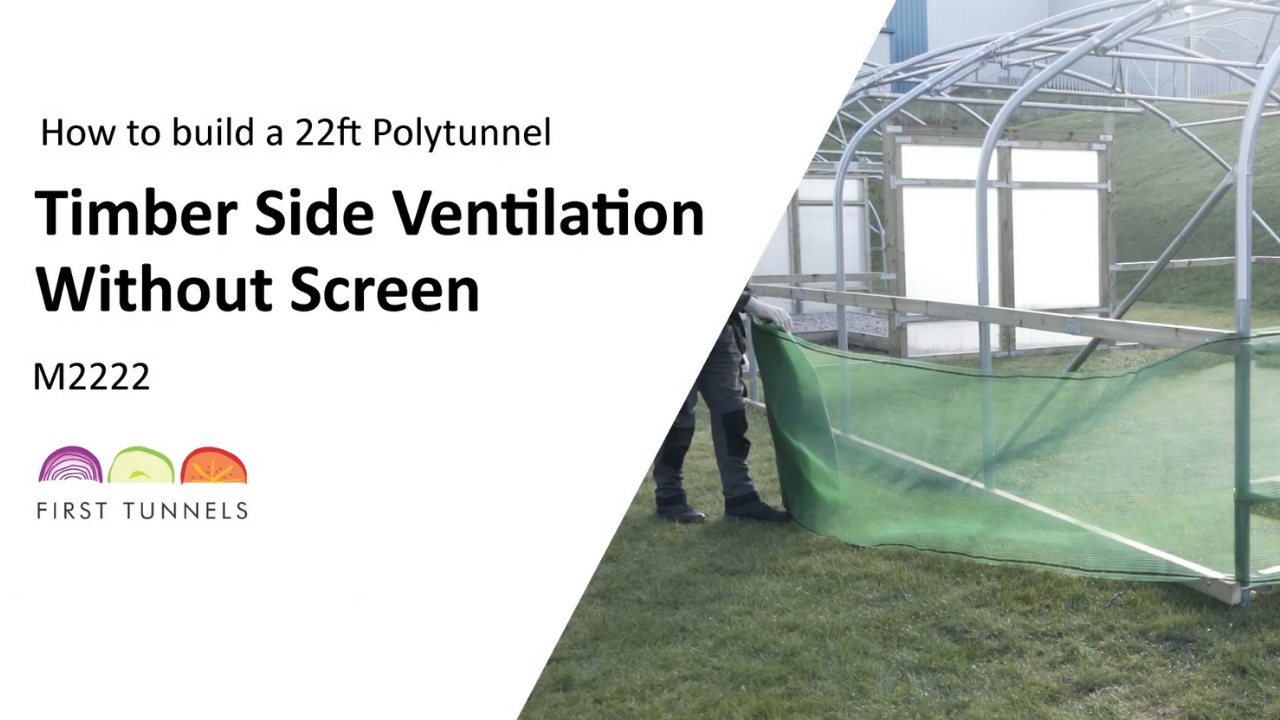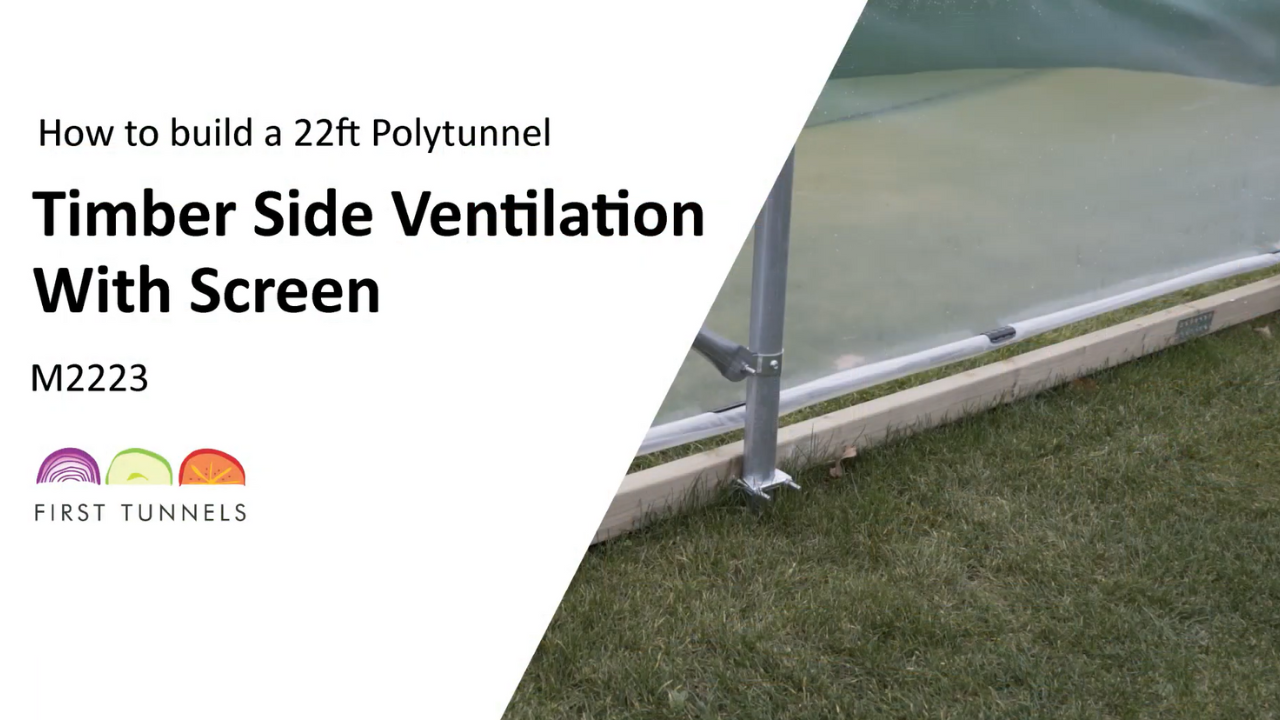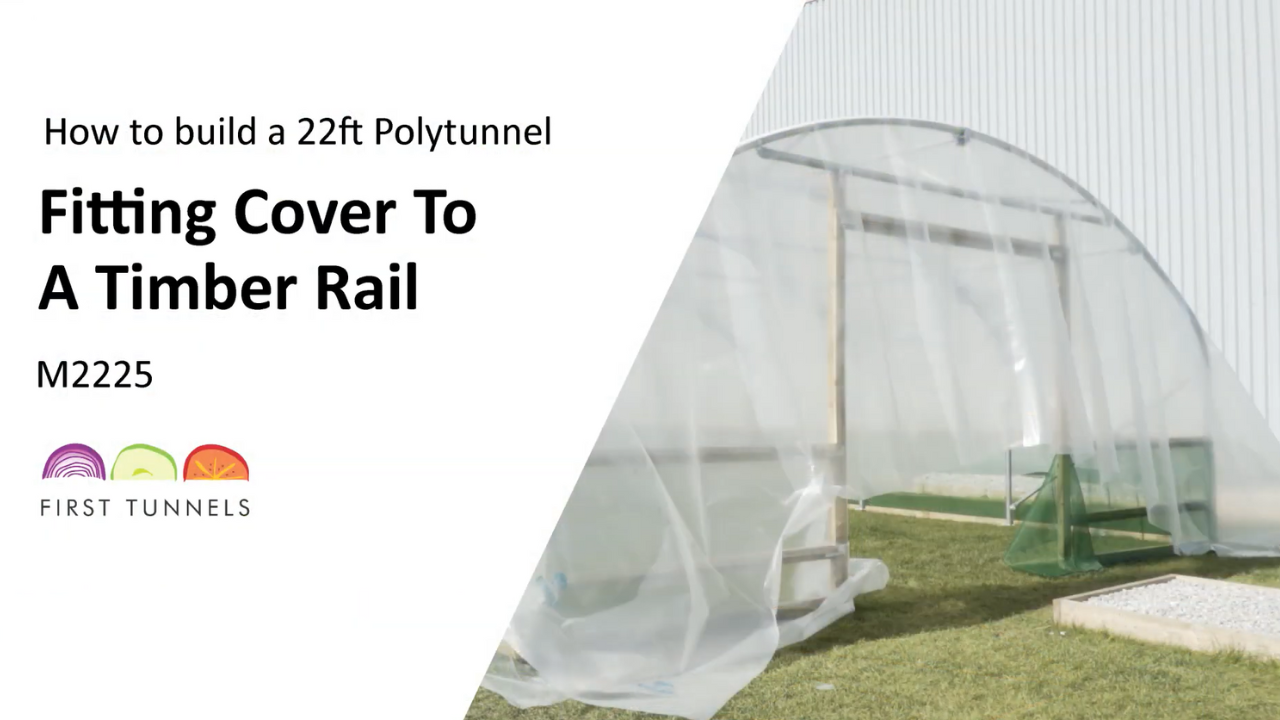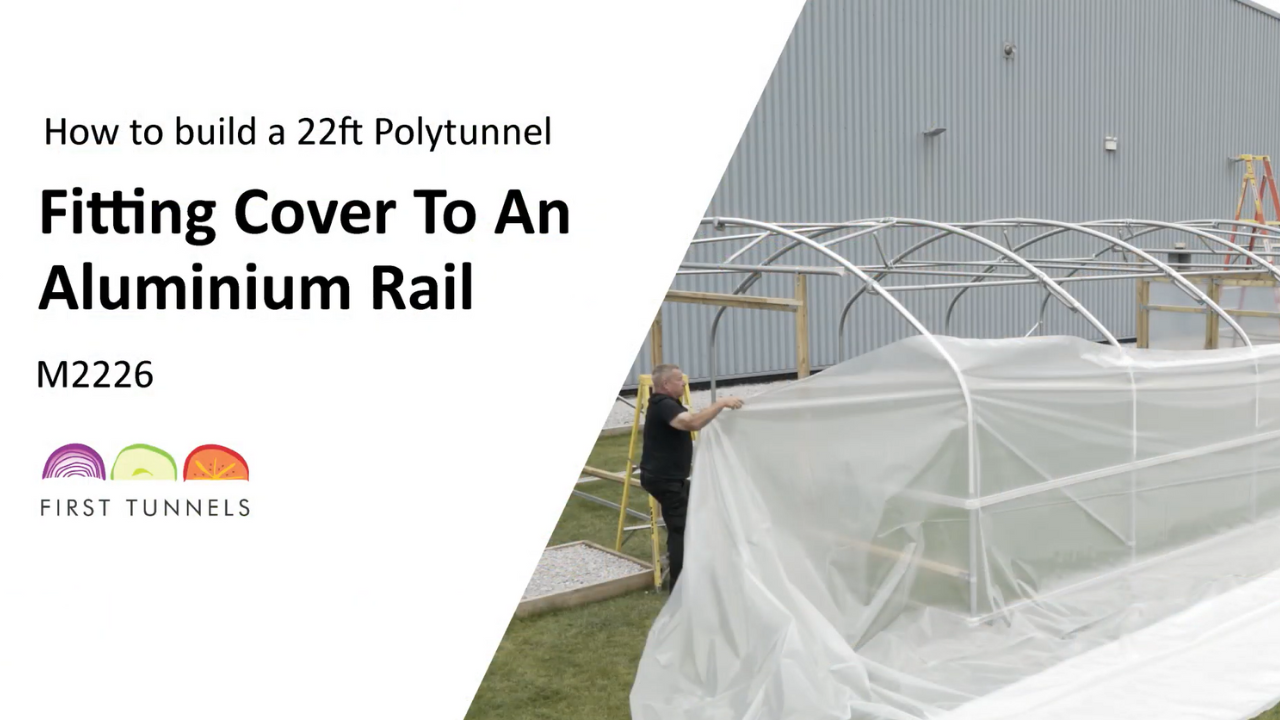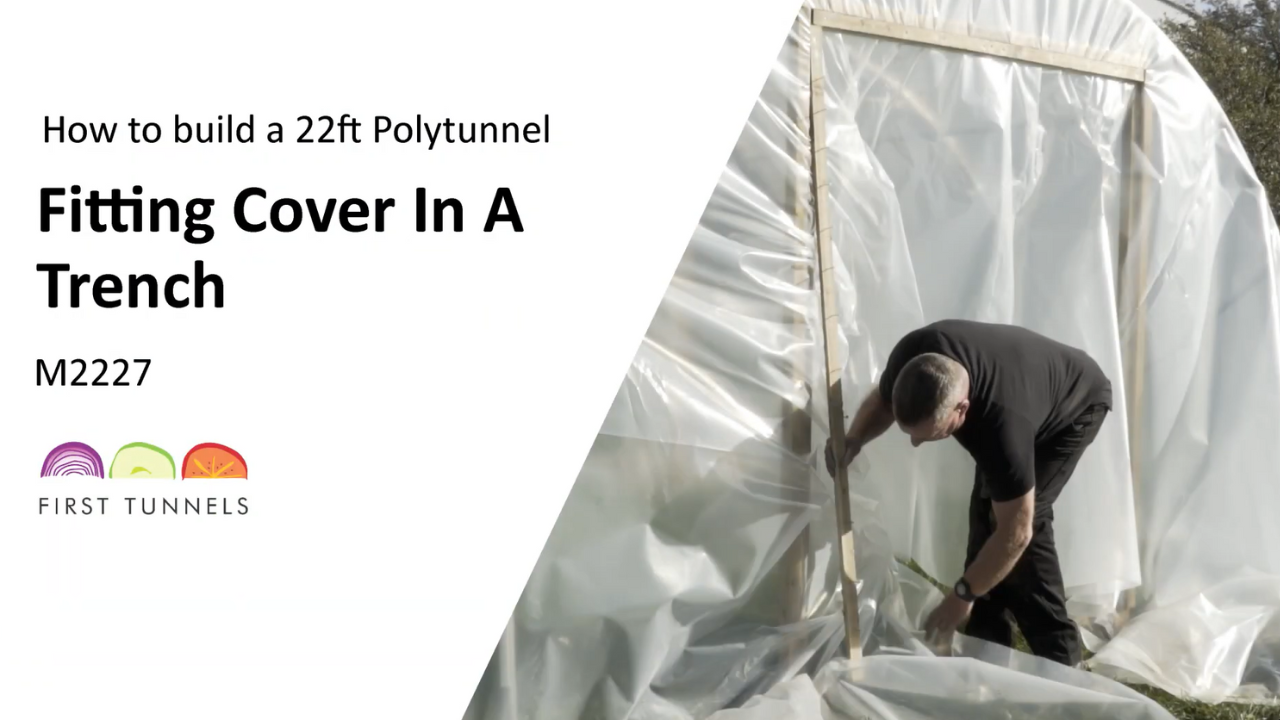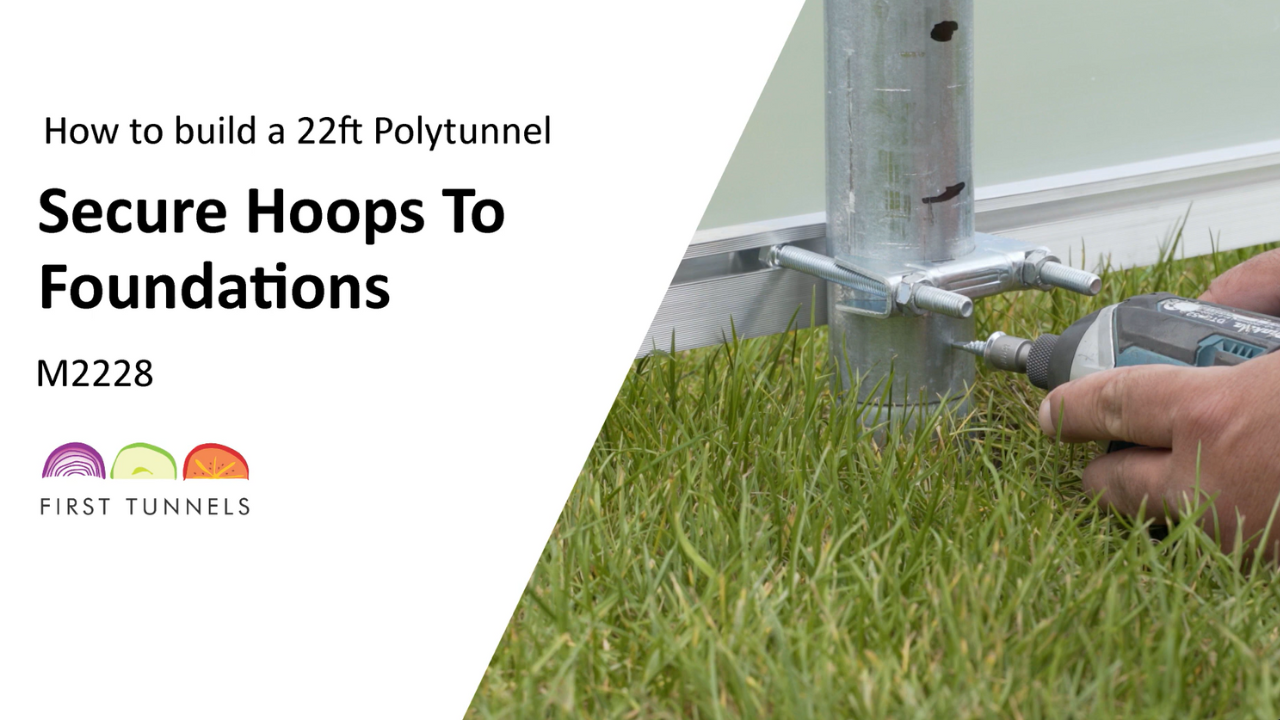The aluminium side rail is supplied in lengths of 61cm, 1.83m and 3.66m. They consist of 2 corner rails 61cm and 1.83m long (DASR1830). The corner rail fixes from the door post to the corner hoop and onto the side rail (which are supplied in 61cm,1.83m and 3.66m lengths) (DASR0610) (DASR1830) (DASR3660) (fig 18a). The aluminium side rail fixes along the length of the polytunnel, on the outside of the framework with the tee slot internally facing.The aluminium rail is attached to the framework using intermediate clamps (ICA50) and corner clamps (CCA50).
To fit the side rail from the door post to the corner hoop you will need two pieces of side rail, one piece 61cm long and one piece 1.83m long. Join the two piece together. Slide half of the rail joiner into one piece of the side rail and tighten the screws using the Allen key provided (fig 18b). Then slide the second piece of side rail onto the rail joiner and tighten the screws. This piece will extend beyond the width of your polytunnel and will be trimmed to size at the end.The 61cm, 1.83m and 3.66m lengths will be used down the length of your polytunnel, corner to corner (DASR0610) (DASR1830) (DASR3660) . The side rail should be fitted so it leaves a gap of 75cm between the top of the base rail and the bottom of the side rail. Using a pencil, make a mark on the top and bottom of the side rail, carefully pull to the side to reveal the door post and make a mark on the door post inline with the T slot. Use a 9mm wood drill bit to drill a hole through the door post. Slide a 90mm M8 bolt into the T slot and then through the pre-drilled hole (fig 18c). Fix in place using a nut and washer ensuring the end of the side rail is flush with the inner edge of the door post (fig 18d).
Fit a corner clamp to the corner hoop (CCA50). To assemble, place the U bolt around the corner hoop with the threads pointing to the inside of the polytunnel. Place the tube pressing then corner clamp onto the threads, ensuring the corner clamp wings run parallel with the width and length of the polytunnel. Secure in place with nuts, finger tight (fig 18e). Slide a 16mm M8 bolt in the tee slot of the rail and through the corner clamp. Secure the side rail to the corner clamp using a nut. Move the corner clamp up or down so that the bottom of the side rail is 75cm above the base rail and firmly tighten the corner clamp nuts.
Next, fit the aluminium side rail down the length of your polytunnel. Start with the 61cm length, slide a 16mm M8 bolt down the T slot and locate the bolt through the corner clamp. Butt the side rail up the corner side rail and tighten the nut. You will now start to use the 3.66m lengths of side rail. Join this length to the previously fitted length using a rail joiner (SAJ1). Slide half of the rail joiner into one piece of the side rail and tighten the screws using the Allen key bit provided. Then slide the second piece of side rail onto the rail joiner and tighten the screws. To secure the side rail to the intermediate hoop slide two hexagon bolts from the intermediate clamps (ICA50) down the T slot of the side rail. Position them at either side of the hoop, place the curved pressing over the bolts, measure 75cm up from the side rail and tighten (fig 18f). Repeat this procedure until you reach the end of your polytunnel. The final piece will exceed the length of your polytunnel and we will trim this off at the end. To fit the side rail between the corner hoop and door post on the opposite end of your polytunnel, join a 61cm piece and 1.83m piece and hold it in position. You will need to cut to size. Cut the excess off the 1.83m piece. Secure it to the corner clamp (CCA50) and door post using the same method as described earlier.
NOTE: Where the side rails exceed the width and length of your polytunnel cut off the excess with a hack saw. The sawn edges will be sharp. It is important that these are filed smooth before the cover is fitted for safety and so that don’t damage the polythene cover.
If you have ordered aluminium side ventilation for both sides of your polytunnel, repeat this process on the opposite side.
The next part of this process is to install the ventilation netting. However, it is best to fit the ventilation netting after the polytunnel cover has been fitted. This is because during the process of fitting the cover the rails are raised, the cover is attached and then the rails are lowered to add extra tension. Fitting ventilation before the cover has been fitted will hinder the process and will result in the ventilation netting being baggy. Please read instructions, Fitting Polytunnel Cover to Aluminium Rail and then return to this section to perform the final fit of your ventilation netting.
To fit the ventilation netting, start by rolling it out down the length of your polytunnel and ensure there is enough overhang at either end. The green netting is secured to the side rail using the U (UPLAS1) and T (TPLAS2) profiles which will need cutting to size (fig 18g). Measure and cut a piece of the U profile to fit between the door post and corner clamp (fig 18h). Position the netting over the channel and secure in place by pushing the U profile into the channel. Measure and cut a piece of the T profile to fit between the door post and corner hoop and then hammer this into place using a rubber mallet. Now work down the length adding sections of the U profile to secure the ventilation netting to the side rail. Then from the final corner to the door post. Hammer the T profile into place ensuring it covers any joins in the U profile (fig 18i). Repeat this procedure to secure the ventilation net to the base rail. It is best to start in the centre and work outwards to both ends. Pull the net down while doing so to tension. Using a wooden batten, measure and cut a piece that fits in between the base rail and side rail on the door post. Tension the netting and then secure to the door post using nails. You can now trim off the excess. Repeat this on the opposite side of your polytunnel if you have ordered aluminium side ventilation for both sides.


